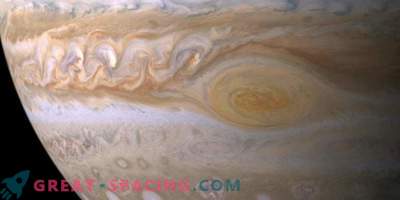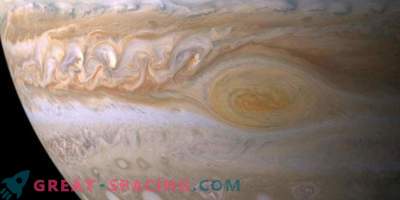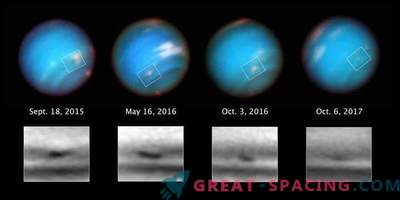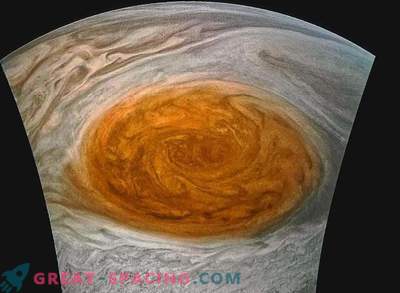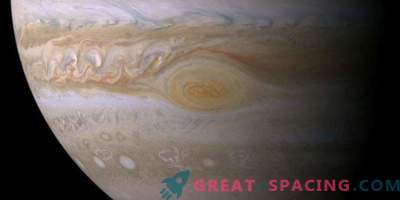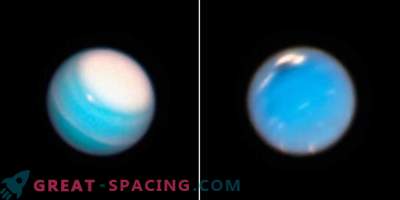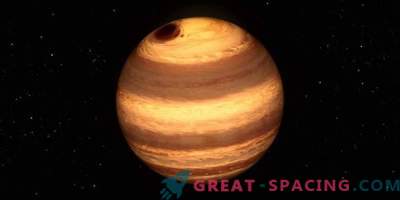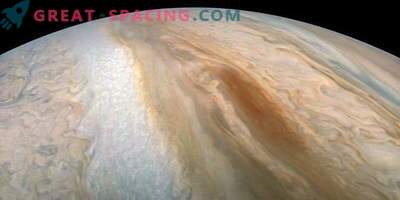
One of the very first photos of the Great Red Spot and a photo in 2014 shows how the spot has decreased
Jupiter is not only the largest planet and the gas giant of our system, but also the owner of the largest atmospheric vortex in the Solar System! Meet the amazing Big Red Spot, which risks soon to stop being “big”.
Storm gas giant
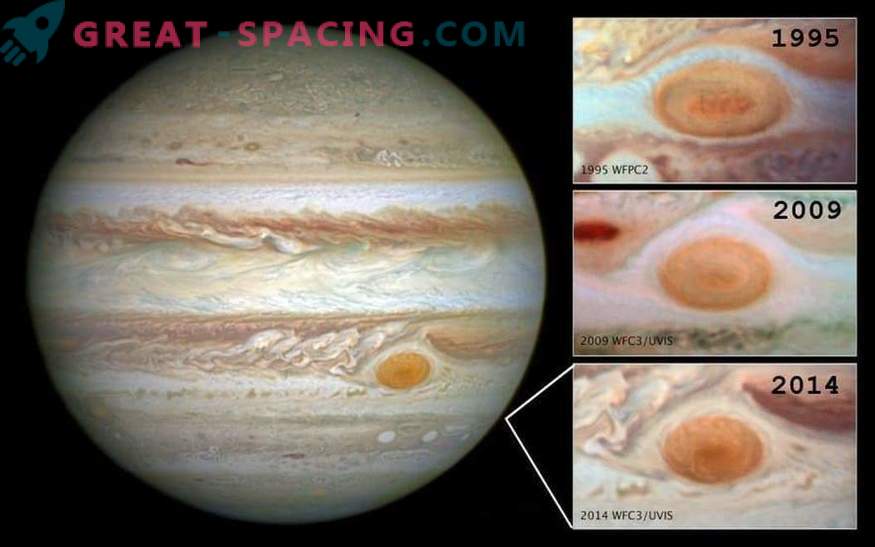
Images of the Jupiter Big Red Spot taken by the Hubble Space Telescope for 20 years show how the spot size has decreased in recent years.
The spot was first found by astronomer Giovanni Cassini in 1665. After it, several more notes were found indicating the strange mark of Jupiter. If this is the case, then the Great Red Spot managed to survive 350 years (perhaps much longer)!
This is a large-scale formation, surpassing the parameters of our planet: it is stretched in length by 24000-40000 km, and in width - 12000-14000 km. You need to search at 22 ° Yu. sh. and move parallel to the equatorial line of the planet. Inside the spot is a gas that makes a full period of rotation in 6 hours, moving counterclockwise. The wind accelerates to 500 km / h. The red color cannot yet be explained, but it is believed that the whole thing is in the presence of certain chemical compounds, including phosphorus. There is also an assumption in changing locations. When the storm is located at the same altitude, it appears white, and as the power increases, the hurricane rises above the general cloud layer, comes in contact with the sun's rays and turns red.
Less and less
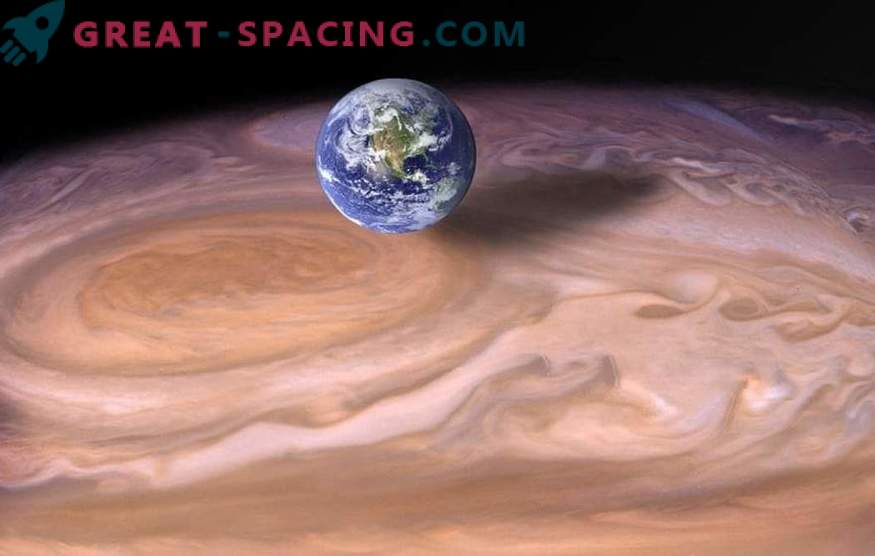
Comparing the size of the Great Red Spot and the Earth
All data indicates that the largest atmospheric vortex of the solar system is shrinking. For example, when compared with observations from the 1880s, its parameters have decreased by half, and the brightness level has also decreased.
To more accurately determine the trend, researchers had to analyze the planet’s surveys for 140 years. First of all, scientists were interested in the duration of the existence of a storm. Why the storm does not subside? It's all about the nature of the gas giant. The planet is devoid of a solid surface layer, which could act as a brake on the air flow.
The analysis showed that the spot deepens at 300 km, where the base is warmer in temperature than the top. The research team decided to cover the data from the mid-19th century to modern indicators. But the earlier information is difficult to verify, because it represents drawings and vague explanations, which does not allow to accurately determine the location, parameters, shape and color. Most of all confirmed information was obtained from 1979 to our days. It turned out that the Great Red Spot is shrinking in length and width. At the same time, it seems to be rounded, stretching along the level of height. Since 2005, the drift rate has increased (compared with the speed of planetary rotation). Since 2014, there has been a darkening and shrinking of the nucleus.
It has always been believed that the size and speed of the movement of a storm are related to its location and changes in the vorticity of neighboring air currents. But the observations of the 2014-2017s. show that changes in color and structure can be supported by changes in the dynamics of the winds within the storm itself, without reference to the speed drift indicators.
Postscript
Researchers will continue to monitor the spot and analyze data from the Juno spacecraft. It is important to understand that atmospheric vortices are also found on other gas giants, so this is a common feature. But, despite the reduction in size, Jupiter's Great Red Spot is still a champion in the solar system.
